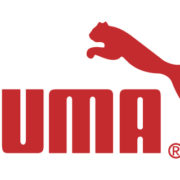What can SMEs learn from big business – video
 This month, we introduce the last instalment of our blog ‘What SMEs can learn from big businesses’. Part 3 focuses on viral marketing and how organisations are adopting video as a key element within their marketing mix for increased brand exposure.The high costs historically associated with video and TV has prevented many brands from adopting this form of media. However, with the rise of YouTube and mobile technology, more businesses have been given the opportunity to produce and distribute video content to the masses.
This month, we introduce the last instalment of our blog ‘What SMEs can learn from big businesses’. Part 3 focuses on viral marketing and how organisations are adopting video as a key element within their marketing mix for increased brand exposure.The high costs historically associated with video and TV has prevented many brands from adopting this form of media. However, with the rise of YouTube and mobile technology, more businesses have been given the opportunity to produce and distribute video content to the masses.
Over the past few years, video content has evolved and is now much shorter, concise and impactful. When creating videos, it’s important to focus specifically on the content your clients and target market are looking for. That means your videos should be oriented towards serving their needs and interests. A 5 minute video highlighting reasons why they should use your business is unlikely to pull on the heart strings, but an innovative campaign that showcases your humour, emotions or personality may in fact be YouTube gold.
For some inspiration, take a look at some of the top viral campaigns of 2013.
Dove, the global cosmetics brand, conducted a social experiment with the intent to teach all women “You are more beautiful than you think”. Dove used an FBI-trained forensic artist to blindly translate two different descriptions of participant’s facial features. One in which the woman describes her own features and another in which she gets described. It’s no surprise that the self portrait the participant described of herself is less complimentary compared to the other portrait that is relayed by the other person. Dove’s message became apparent “Women are their own worst beauty critics”. As a result, the video generated over 163 million views worldwide.
They say you can’t manufacture viral videos, but to a certain extent you can. GoPro, the maker of the HD personal camera range, did exactly this by taking someone else’s viral video, in which their product played a key role. The footage entitled ‘Be a hero’ shows a fire-fighter pulling an unconscious kitten from a fire and bringing it back to life with an oxygen tank. The video was reportedly captured on a helmet-mounted camera and follows the brand’s previous viral success that featured supposedly amateur footage of a seagull’s flight, filmed when the bird picked up a GoPro camera. The ‘Be a hero’ video is just shy of its 20th million hit.
Finally, Evian’s “Baby & Me” campaign was the most popular video ad of 2013 in the UK, with more than 67 million hits. The video features men and women of various ages dancing in front of a mirror, with their reflections showing them as babies. After this successful campaign, Evian experienced viral reactivation. Viral reactivation occurs when a newly released video like “Baby & Me”, drives viewers back to older campaigns like “Live Young.” All of Evian’s previous campaigns experienced reactivation, for example, the brand’s 2011 campaign, “Baby Inside”, grew by 1.1 million views after its release.
Interestingly, none of the viral campaigns above mention why you should be drinking their water or purchasing their camera. Rather than producing a sales pitch, the innovative, thought-provoking videos speak to their target audience in a unique way.
With YouTube now the second largest search engine after Google, it is hard to ignore the huge potential video marketing will have on an organisation’s position in the market.
Why not refresh your marketing in 2014 by integrating video into your marketing mix.











Leave a Reply
Want to join the discussion?Feel free to contribute!